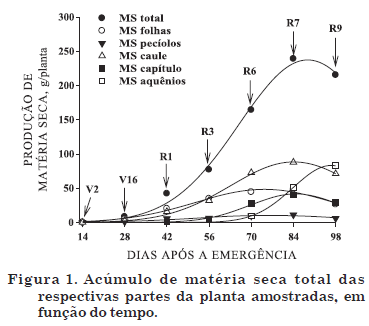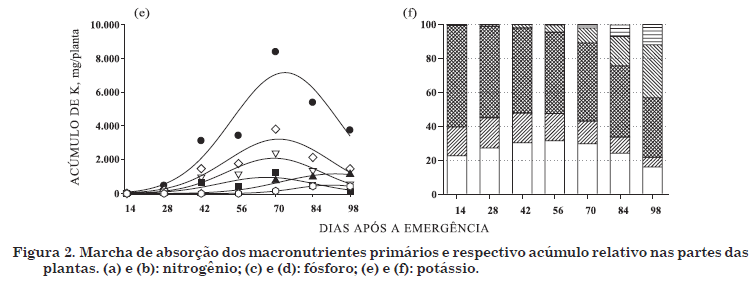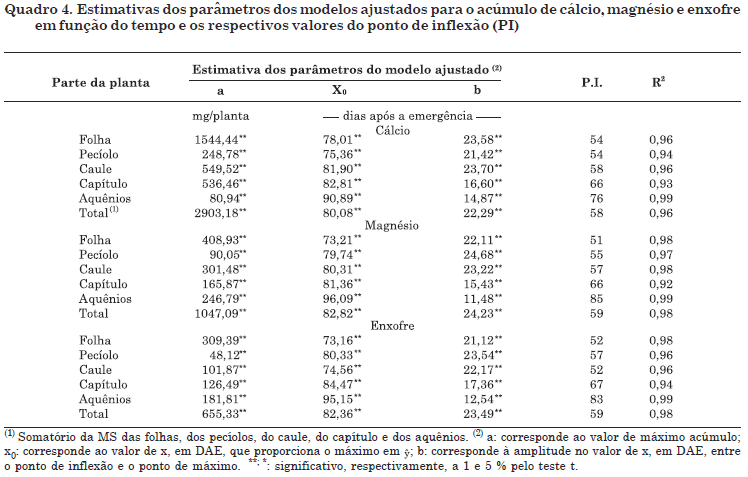This study aimed to establish curves of macronutrient accumulation in sunflower. The experiment was conducted in the field on a Typic Hapludox, at the experimental station of Embrapa Soja in Londrina, State of Paraná. The plots consisted of 14 25 m long rows spaced 0.70 m apart, resulting in a total area of 245 m², with four replications. Prior to sowing a fertilization seeding of 300 kg ha-1 of 05-20-20 NPK fertilizer was applied. Fertilization was split in two applications of 25 + 1 kg ha-1 N and B, which were applied 21 and 35 days after sowing, respectively. The hybrid BRS 191 and a final plant density of 40,000 plants ha-1 were used. Plant samples were collected every two weeks after emergence and separated in the different parts (petioles, leaves, stems and, when applicable, capitula and achenes). After drying, each plant part was weighed and ground to determine the N, P, K, Ca, Mg, and S content. From the contents of these nutrients and dry mass of each plant, the accumulation curve was obtained. It was found that for yields > 3,000 kg ha-1, BRS 191 extracted about 150, 24, 286, 116, 42, and 24 kg ha-1 of N, P, K, Ca, Mg, and S, respectively, in the following order of extraction: K> N> Ca> P = S. In addition to the relation to exportation, the nutrient order was: N> P = K> S = Mg> Ca. Therefore, special attention should be paid to the maintenance of an adequate supply of N, K and Ca, due to the high demand of sunflower.
Helianthus annuus; growth; accumulation











